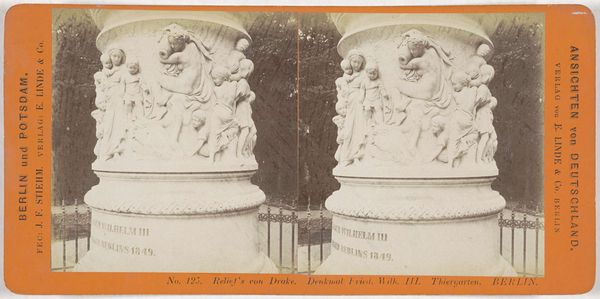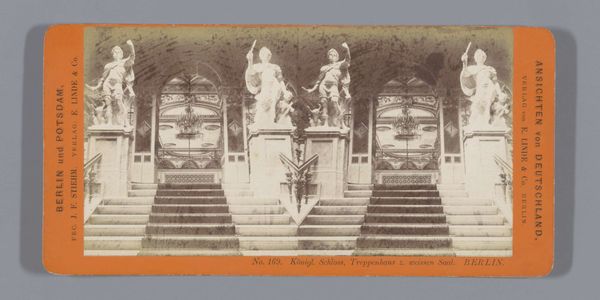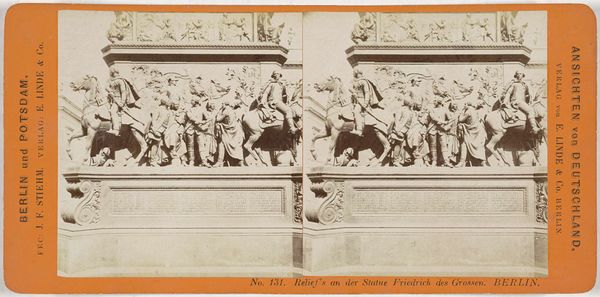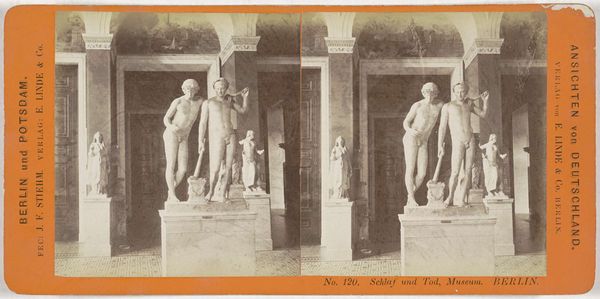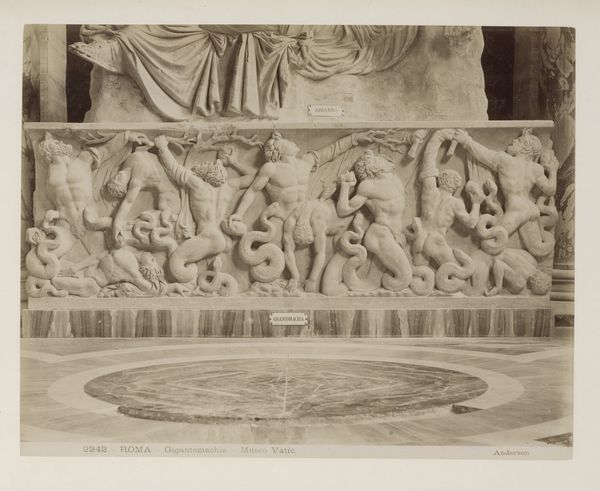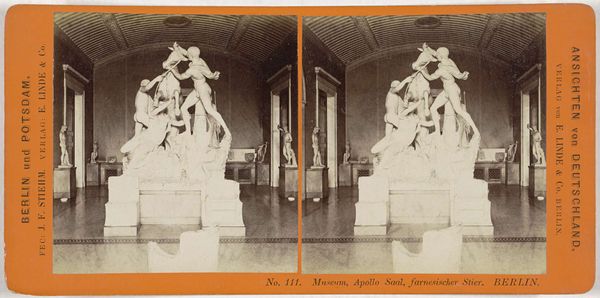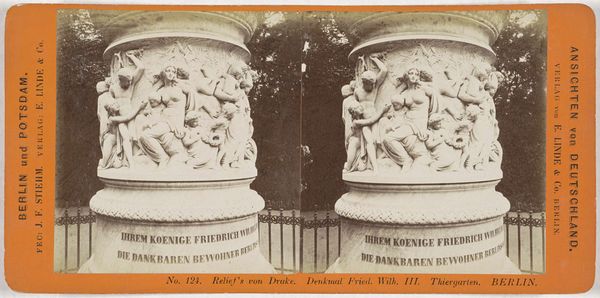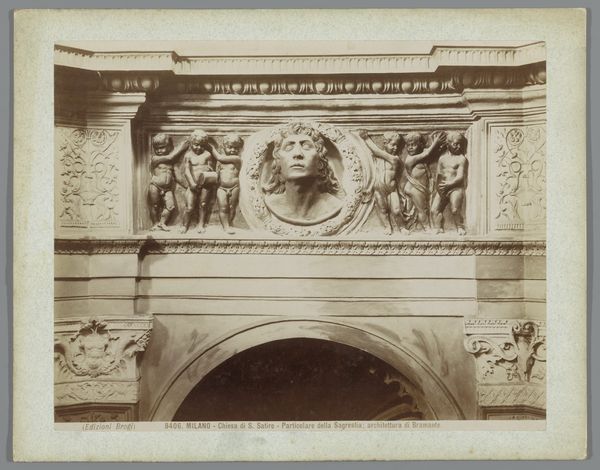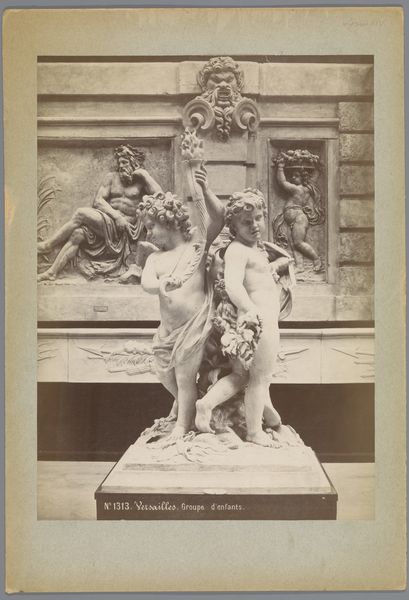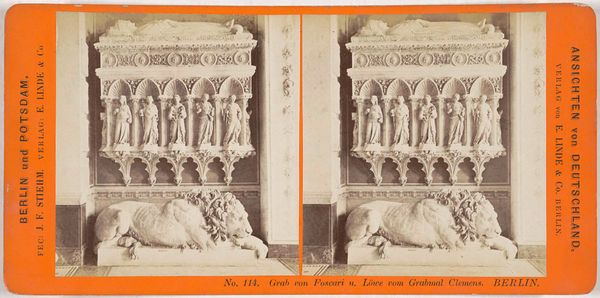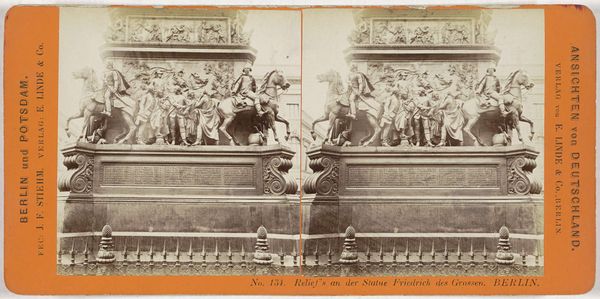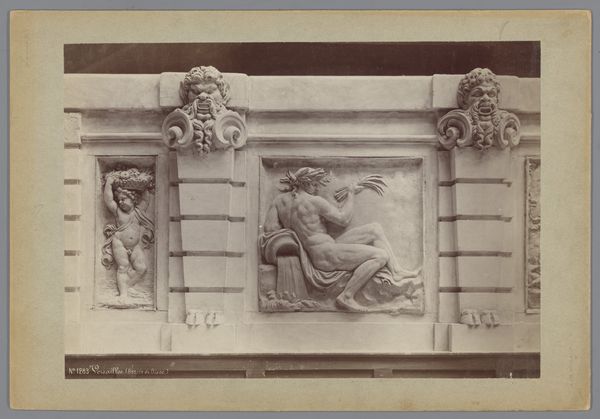
Reliëf op de sokkel van Friedrich Drakes beeld van Friedrich Wilhelm III in de Tiergarten, Berlijn 1868 - 1870
0:00
0:00
bronze, photography, sculpture
#
portrait
#
16_19th-century
#
neoclassicism
#
landscape
#
bronze
#
photography
#
sculpture
#
19th century
#
cityscape
#
watercolour illustration
Dimensions: height 87 mm, width 177 mm
Copyright: Rijks Museum: Open Domain
Curator: Alright, next up, we have a stereoscopic photograph by Johann Friedrich Stiehm, circa 1868-1870, titled "Relief op de sokkel van Friedrich Drakes beeld van Friedrich Wilhelm III in de Tiergarten, Berlijn." It captures a detailed view of a sculpted relief. What's your take, right off the bat? Editor: Hmmm, it's like a dream caught in stone. The figures almost seem to float out of the column, with this melancholy hanging in the air—even through a photograph, I find it romantic, and honestly a bit tragic. It seems as though they're stuck, doomed to be stuck, writhing around on that plinth, as though there isn’t even room to sit comfortably. What are they yearning for, do you suppose? Curator: The figures represent allegorical virtues and historical scenes related to Friedrich Wilhelm III. So the iconographic language speaks to a complex mix of mourning, pride, and civic duty that’s so prevalent in Neoclassical art. Those repeated figures and postures do look almost choreographed. Editor: Absolutely. Neoclassicism often uses these tropes to show that it isn’t about unique individuals—instead, they embody ideas, right? It reminds me of stagecraft—a bit theatrical, like a carefully constructed performance. What always gets me are those tiny faces in the top register, dwarfed beneath the dominating arboreal form! What do we make of the almost literal presence of family trees? Curator: I would hazard that these kinds of symbols served as a sort of reassurance after times of war and uncertainty, of political anxiety. It also reminds viewers about ideas of nobility and divine providence. It would be easy for many modern people to think that symbols can lose power over time. This piece however feels as potent as any of the contemporary statues we might see in place today. It has truly stood the test of time. Editor: Maybe it speaks to the fundamental nature of stories: that these virtues of old can, still, carry their weight. They reflect us even when draped in neoclassical robes. That's quite wonderful and also deeply, strangely sad. A nice combination!
Comments
No comments
Be the first to comment and join the conversation on the ultimate creative platform.
